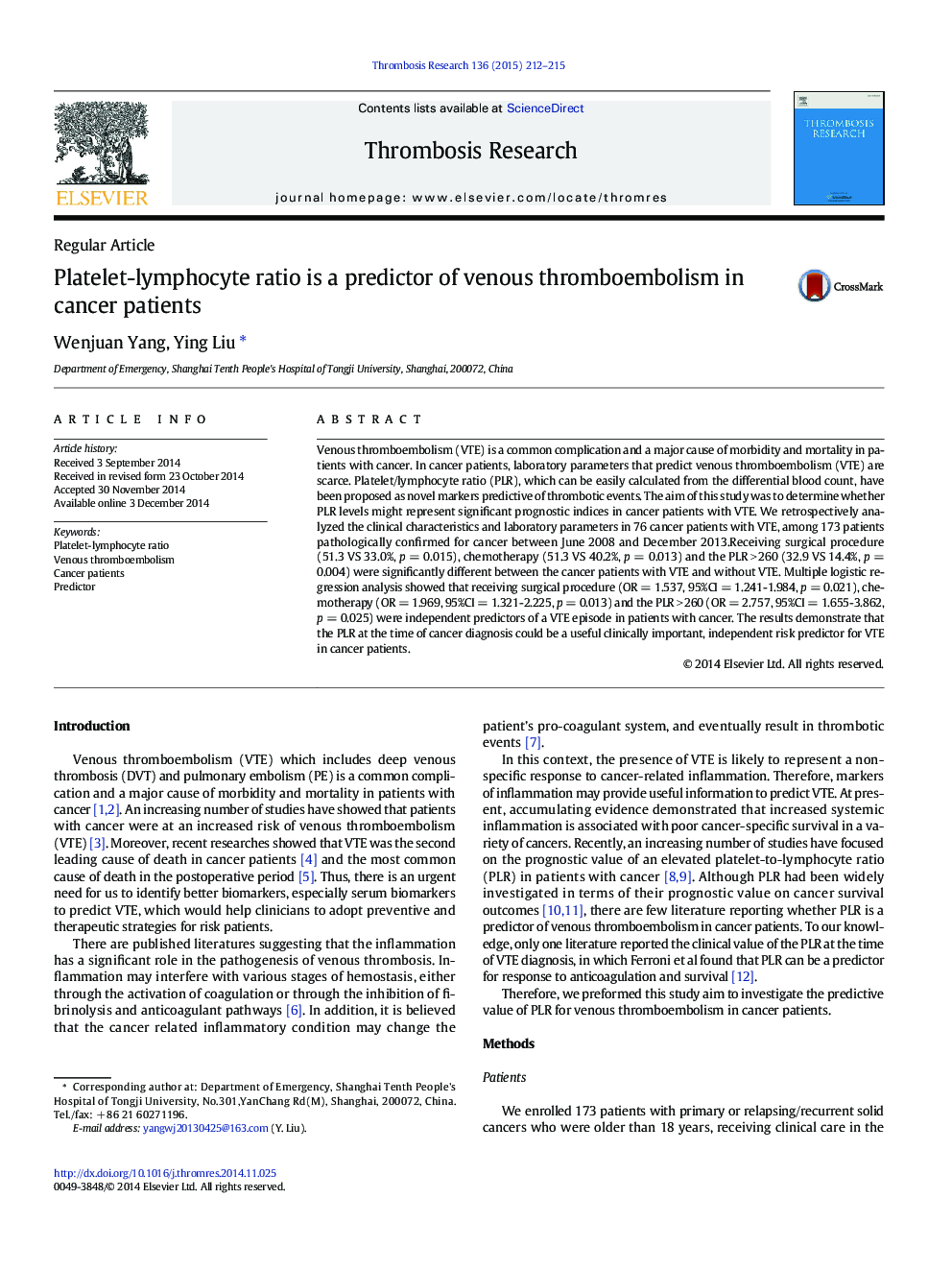| Article ID | Journal | Published Year | Pages | File Type |
|---|---|---|---|---|
| 6001281 | Thrombosis Research | 2015 | 4 Pages |
â¢We retrospectively analyzed the clinical characteristics of cancer patients with VTE.â¢PLR > 260 was an independent predictor of a VTE episode in patients with cancer.â¢PLR is an important clinical predictor of VTE in cancer patients.
Venous thromboembolism (VTE) is a common complication and a major cause of morbidity and mortality in patients with cancer. In cancer patients, laboratory parameters that predict venous thromboembolism (VTE) are scarce. Platelet/lymphocyte ratio (PLR), which can be easily calculated from the differential blood count, have been proposed as novel markers predictive of thrombotic events. The aim of this study was to determine whether PLR levels might represent significant prognostic indices in cancer patients with VTE. We retrospectively analyzed the clinical characteristics and laboratory parameters in 76 cancer patients with VTE, among 173 patients pathologically confirmed for cancer between June 2008 and December 2013.Receiving surgical procedure (51.3 VS 33.0%, p = 0.015), chemotherapy (51.3 VS 40.2%, p = 0.013) and the PLR > 260 (32.9 VS 14.4%, p = 0.004) were significantly different between the cancer patients with VTE and without VTE. Multiple logistic regression analysis showed that receiving surgical procedure (OR = 1.537, 95%CI = 1.241-1.984, p = 0.021), chemotherapy (OR = 1.969, 95%CI = 1.321-2.225, p = 0.013) and the PLR > 260 (OR = 2.757, 95%CI = 1.655-3.862, p = 0.025) were independent predictors of a VTE episode in patients with cancer. The results demonstrate that the PLR at the time of cancer diagnosis could be a useful clinically important, independent risk predictor for VTE in cancer patients.
